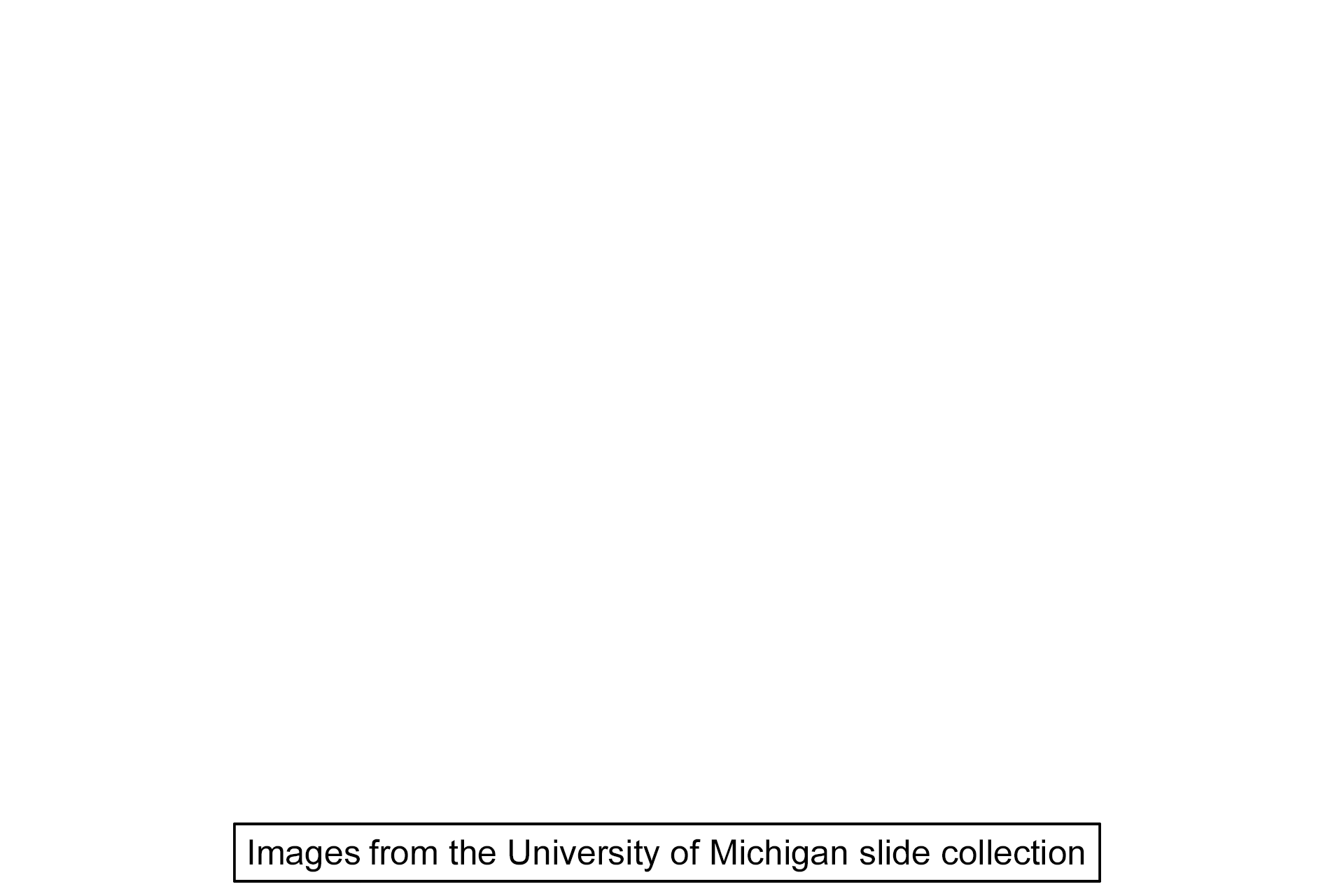
Root stage of tooth development - Crown region
Root development occurs after crown formation and determines the eventual shape of the root. The area of the image on the right is indicated by the rectangle in the image to the left. 10x (l), 400x (r)

Gingiva
Root development occurs after crown formation and determines the eventual shape of the root. The area of the image on the right is indicated by the rectangle in the image to the left. 10x, 400x

Enamel >
The green shading in this image indicates the location of enamel, which is lost during tissue preparation in this demineralized specimen. Enamel is produced by ameloblasts that secrete an organic matrix that quickly becomes mineralized with hydroxyapatite crystals of calcium phosphate.

- Ameloblasts
The green shading in this image indicates the location of enamel, which is lost during tissue preparation in this demineralized specimen. Enamel is produced by ameloblasts that secrete an organic matrix that quickly becomes mineralized with hydroxyapatite crystals of calcium phosphate.

Odontoblasts >
Odontoblasts are located around the outer margin of the pulp organ and secrete the organic matrix of dentine, called predentin, from their apical surface. Predentin is pale staining compared with the mineralized dentine above it and in spanned by processes of odontoblasts called Tomes’ fibers. Tomes’ fibers extend into the dentinal tubules toward the enamel and cementum. A layer of predentin is present throughout life.

- Predentin
Odontoblasts are located around the outer margin of the pulp organ and secrete the organic matrix of dentine, called predentin, from their apical surface. Predentin is pale staining compared with the mineralized dentine above it and in spanned by processes of odontoblasts called Tomes’ fibers. Tomes’ fibers extend into the dentinal tubules toward the enamel and cementum. A layer of predentin is present throughout life.

Dentin >
Dentin comprises the majority of the hard tissue of the tooth and is 70% mineralized, compared with 96% in enamel. Dentin is the first hard tissue deposited during tooth development.

Pulp organ >
Ectomesenchymal cells of the dental papillae differentiate into the dental pulp organ which will form the dental pulp containing odontoblast cell bodies, nerves, and numerous blood vessels.

Blood vessels >
Ectomesenchymal cells of the dental papillae differentiate into the dental pulp organ which will form the dental pulp containing odontoblast cell bodies, nerves, and numerous blood vessels.

Image source >
These images were taken of a slide in the University of Michigan slide collection.